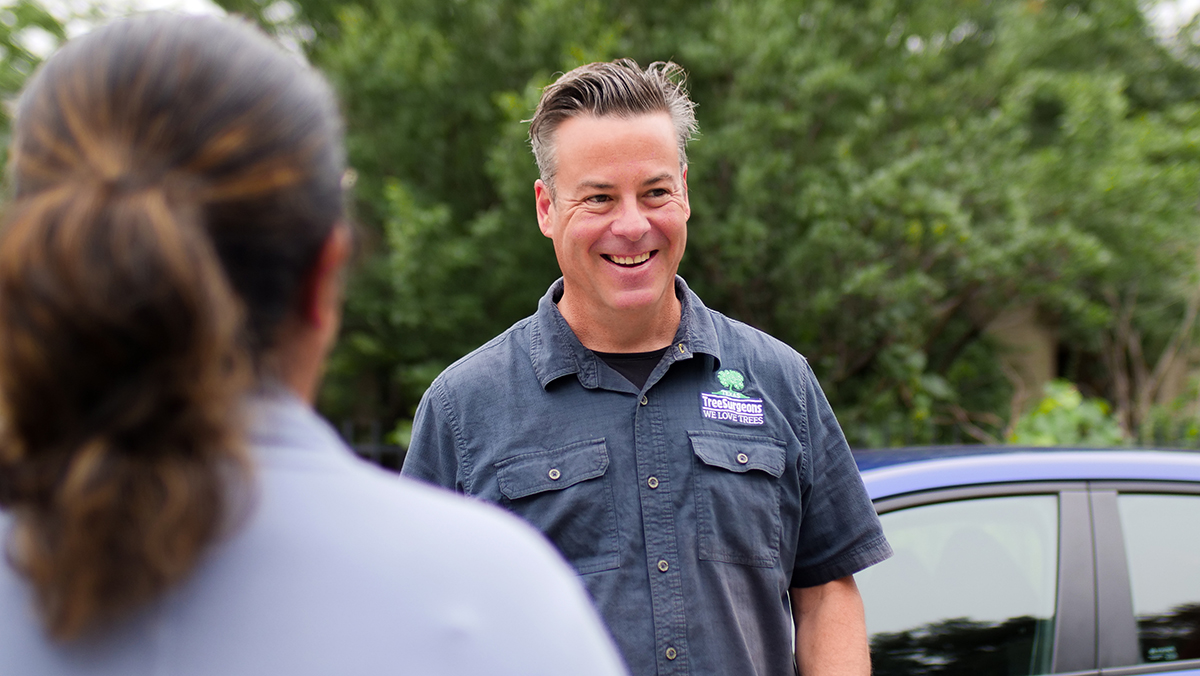
Tree Disease Diagnosis & Management
Trees are vital to our urban landscapes, offering shade, beauty, and critical environmental benefits like cooling, air purification, and stormwater control. But in regions like North Texas—where extreme heat, drought, compacted soils, and pest pressures are common—trees face a range of stressors that can compromise their health and open the door to disease.
At Texas Tree Surgeons, we take a preventative and holistic approach to managing tree health. Our goal is to identify and address problems before they become serious, helping your trees remain strong and resilient in the challenging conditions of urban and suburban environments.
Disease Management
Most tree diseases in our region are caused by fungi or bacteria and are heavily influenced by environmental stress, including drought, root damage, mechanical injury, and poor soil conditions. Urban trees often struggle with limited rooting space, compacted soils, excessive heat from paved surfaces, and construction-related damage. These chronic stress factors weaken a tree’s natural defenses and can lead to what arborists call a tree decline spiral—a progressive loss of vitality caused by multiple overlapping stressors.
It’s rare for a single disease or insect to kill a tree outright. More often, a stressed tree becomes vulnerable to multiple pests or pathogens over time, resulting in a slow and irreversible decline. That’s why early intervention and proactive care are so critical.
Our ISA Certified Arborists use an integrated approach that includes routine inspections, improved cultural practices (like proper pruning and mulching), and targeted treatments only when necessary. Healthy trees are better equipped to resist infection and recover from environmental stress.
Learn more about the causes and signs of stressed trees in urban landscapes.
Common Tree Diseases in North Texas
Oak Wilt
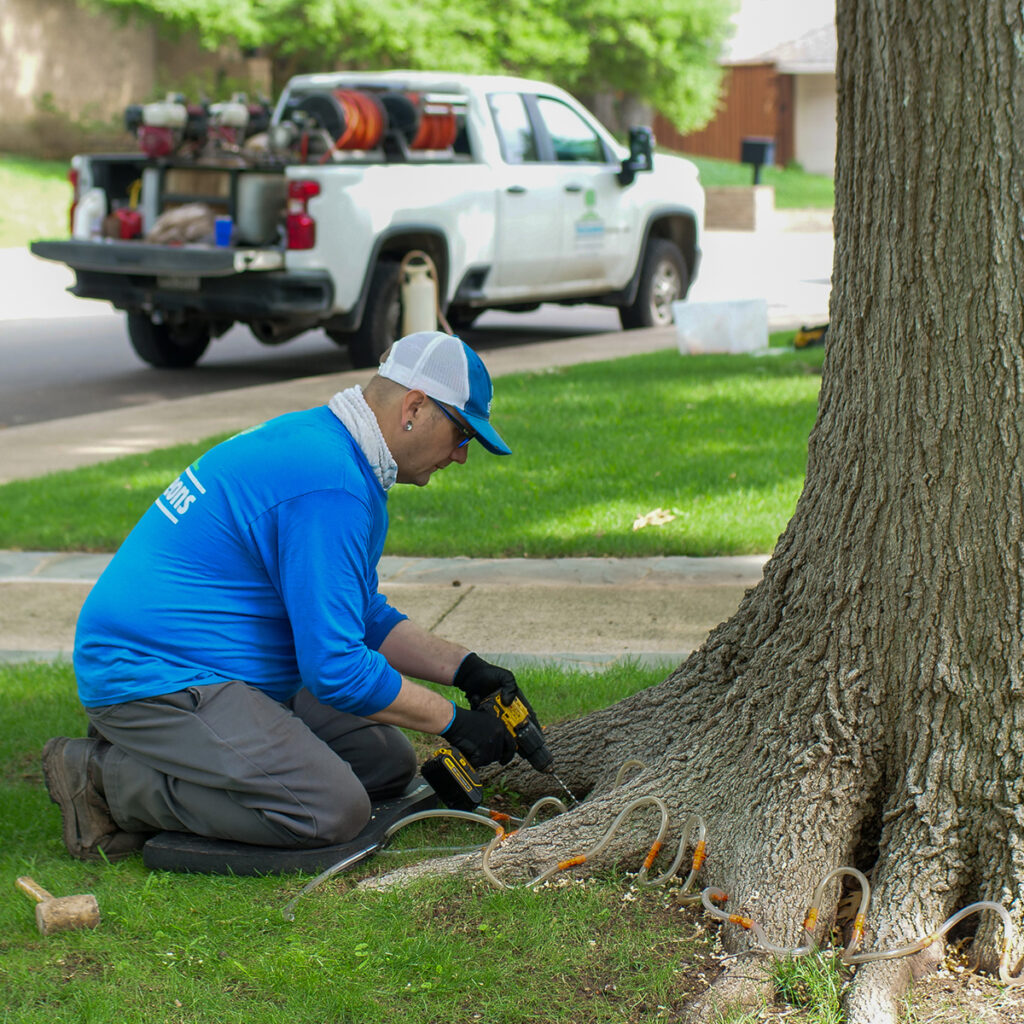
Hosts: All oak species, especially Red and Live Oaks
Symptoms: Browning along leaf veins, canopy wilt, rapid dieback—often fatal to red oaks within weeks
Management:
- Avoid pruning from February to June
- Sterilize tools between cuts
- Trench 4+ feet deep to stop root graft spread
- Remove and destroy infected red oaks—do not use for firewood
- Preventative trunk injections with propiconazole for high-value oaks
Hypoxylon Canker
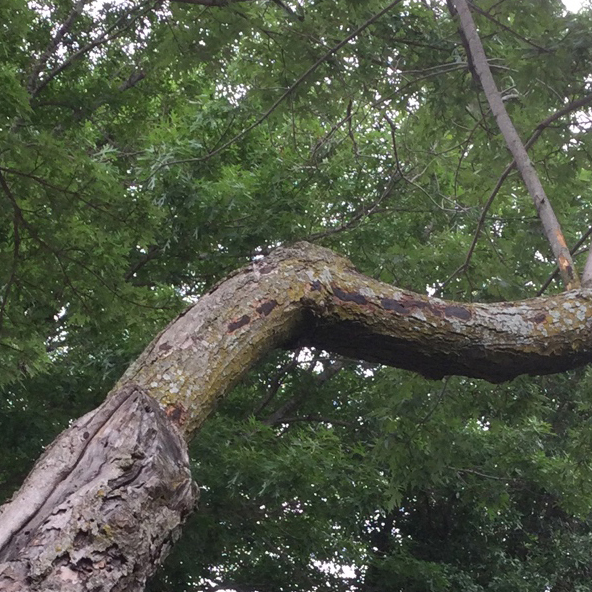
Hosts: Oaks, pecans, elms, maples
Symptoms: Bark peeling, fungal mats (white to black), sudden canopy dieback
Trigger: Commonly follows drought or injury
Management:
- Maintain tree vitality through watering and mulching
- Prevent mechanical injuries to trunk or roots
- Remove severely infected trees—no chemical treatment exists
Bacterial Leaf Scorch
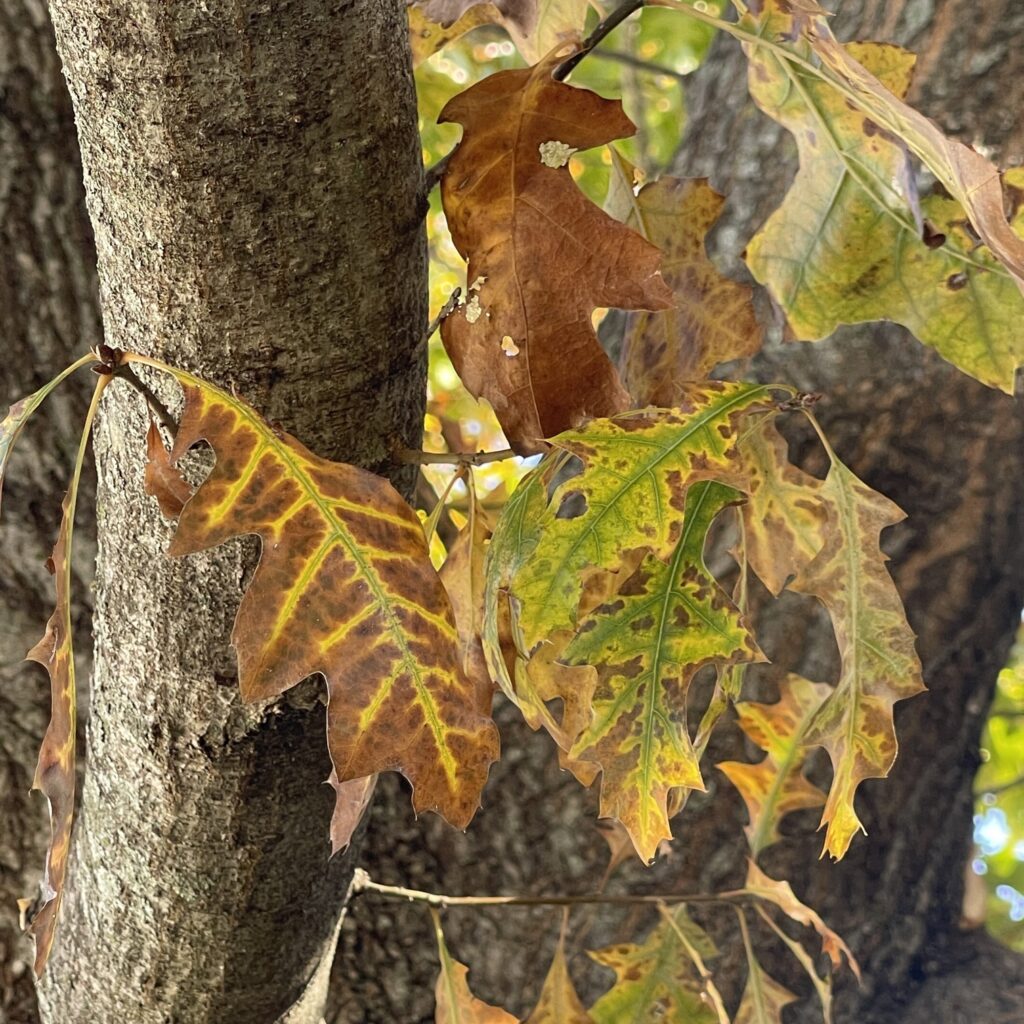
Hosts: Oaks, elms, sycamores
Symptoms: Leaf browning with yellow halo, early defoliation
Management:
- No cure—focus on reducing stress
- Maintain consistent watering
- Prune affected limbs and remove leaf debris
Anthracnose

Hosts: Oaks, elms, sycamores, and others
Symptoms: Irregular leaf spots, twig blight, dieback in spring
Conditions: Cool, wet spring weather
Management:
- Remove and destroy infected plant material
- Winter pruning to reduce pathogen load
- Fungicide applications in early spring may help
Powdery Mildew
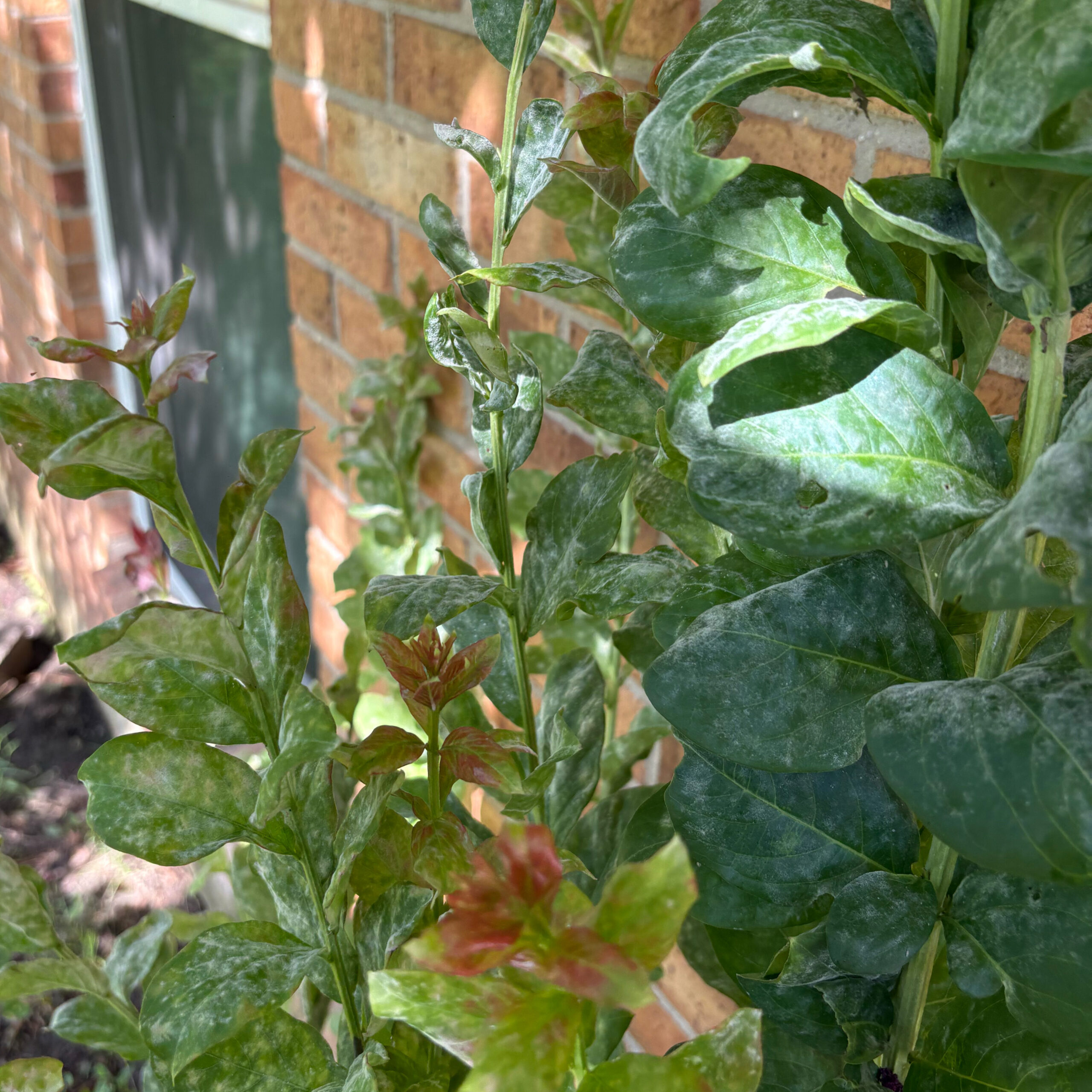
Hosts: Crape myrtles, elms, oaks
Symptoms: White, powdery coating on leaves
Management:
- Improve airflow through thinning and pruning
- Use fungicides where infestations are persistent or severe
Why Professional Diagnosis Matters
Working with our ISA Certified Arborist ensures accurate diagnosis and treatment based on science—not guesswork. Our team uses advanced tools and industry best practices to assess your trees and create a care plan that considers species, location, stress factors, and environmental conditions.
By treating the root causes—not just symptoms—we can help your trees avoid or recover from disease and continue to thrive for years to come.
Concerned About Your Trees?
Let our experienced team assess your property and design a care plan tailored to your landscape. Whether you’re dealing with a specific issue or just want to keep your trees healthy, we’re here to help.
Contact us today to schedule a visit with a Certified Arborist and protect your trees from decline.
Tree Health Care
View Photos of our ISA Certified Arborists & Tree Health Care Technicians Providing Consultation and Care

PREVENTATIVE EAB TREATMENT
If there is EAB activity within a few miles of where you live or property you manage we recommend preventative systemic insecticide treatment applied by a licensed TDA tree health care technician. EAB treatment lasts for 2 years and must be applied regularly to protect ash trees from infection.

OAK WILT TREATMENT
As oak wilt is a systemic, vascular disease, the most effective treatments consist of injecting the infected trees with a fungicidal chemical. The only currently recommended fungicide is Alamo®, a formulation of the fungicide propiconazole. The fungicide is administered through holes drilled in the root flare of the infected tree and should only be applied by Texas Department of Agriculture Licensed Applicators.

STRESSED MAGNOLIA | AFTER
This after photo was taken June 27, 2024 of a magnolia tree after receiving multiple interventions to improve its health. In addition to a tree health care plan of a deep root fertilization with Biopack plus and Sea3 applied by our TDA licensed technician the owner also fixed the irrigation and cleared the root flare. The difference in health is beautiful.

FERTILIZATION
Our Tree Health Care Programs are designed to deliver the right nutrients at the right times throughout the year. We use the highest quality soil conditioners and fertilizers that are delivered at critical points throughout the seasons to optimize the growth and health of trees.

DEEP ROOT INJECTION SERVICES
At Texas Tree Surgeons our deep root injection services provides fertilization deep into the soil. Our unique mixtures combine macro- and micro-nutrients, root growth stimulators, soil conditioners, beneficial biotics (both mycorrhizal fungi and rhizobacteria), and organic materials to cultivate the optimum natural growth environment.

ROOT PRUNING POST AIR SPADING
To correct this improperly planted tree our Tree Health Care Technicians air spade to expose the root flare and to prune away girdling roots. You can learn more about how to properly plant a tree here.

GIRDLING ROOTS
This tree was planted too deep and has several girdling roots (roots that circle the tree and do no flare out) that left unmanaged would eventually kill the tree. After air spading our Tree Health Care Technicians are pruning the roots and adjusting the soil around the tree to expose the root flare to improve tree health.

INSPECTING FOR POSSIBLE DECAY
Sometimes issues with a tree aren't clearly visible on the outside so an arborist will need to inspect the interior. An arborist does this by probing with a small knife to see how extensive the decay in a region of a tree is. Arborists are able to use this information along with other signs to determine if there are potential structural issues or possible increased chances for failure.

MEASURING DBH
The best way to approximate the size of a tree is to measure their dbh, (diameter, breast, height). This enables our arborists to estimate the amount needed for Tree Health Care products or pricing for Tree Removal.

























